#dolichotis
Text
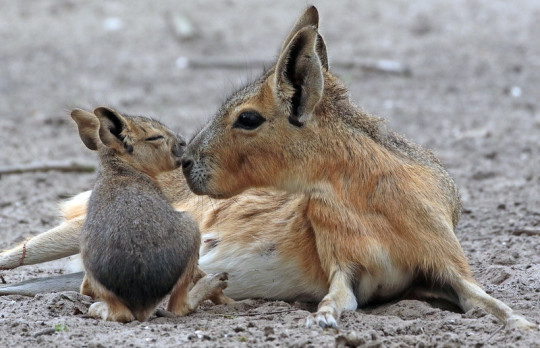
A Patagonian mara (Dolichotis patagonum) and its pup in Dierenpark Hoenderdaell, the Netherlands
by safi kok
#patagonian mara#mara#rodents#dolichotis patagonum#dolichotis#caviidae#rodentia#mammalia#chordata#captive animal#dierenpark hoenderdaell
3K notes
·
View notes
Text
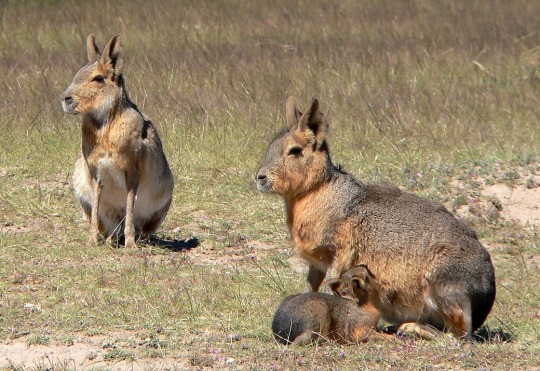
Patagonian Mara (Dolichotis patagonum), family Caviidae, Valdes Peninsula, Patagonia
These fast, large rodents are the size of a medium sized dog, 75 cm (30 in) long, and 16 kg (35 lb).
photograph by Jason Hollinger
139 notes
·
View notes
Text
An family of mara's
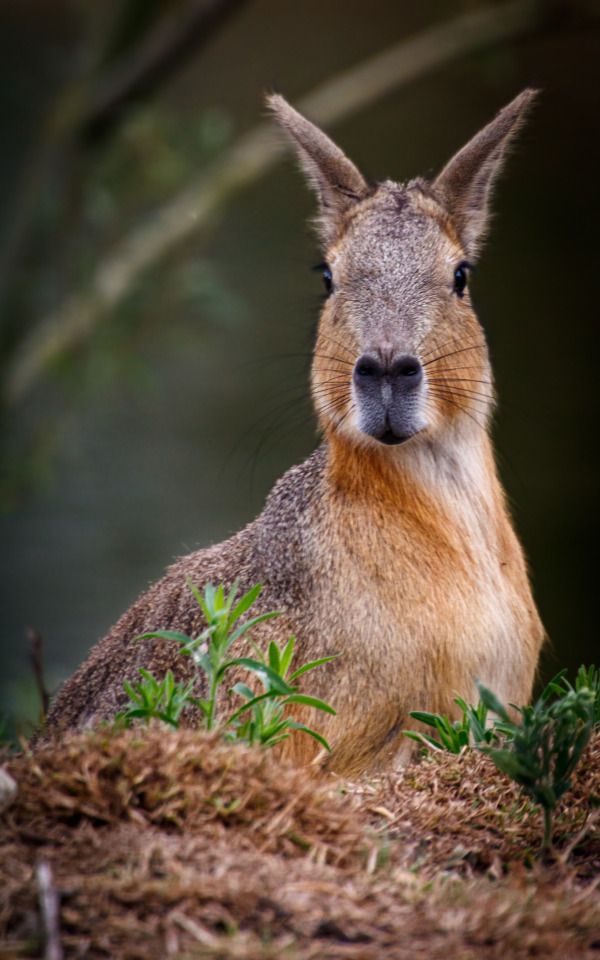
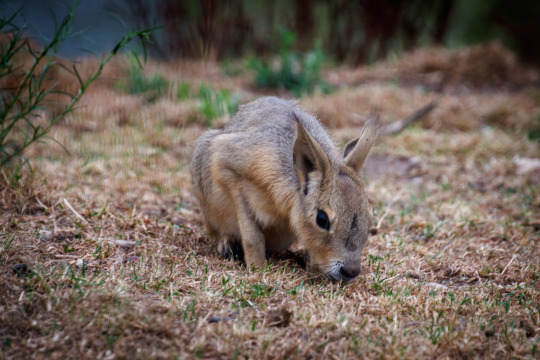
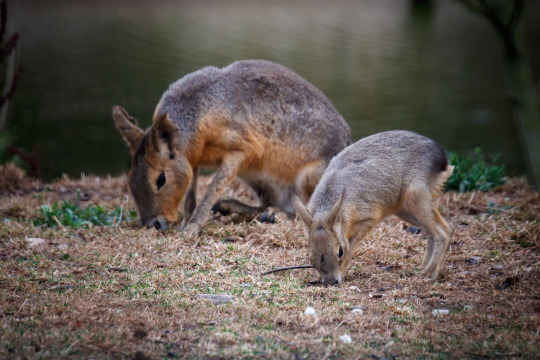
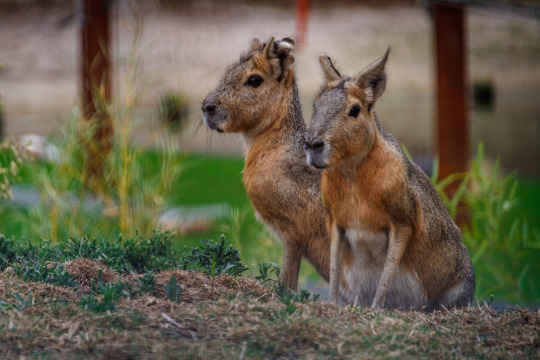
#Ziezoo#Photography#Photo#Zoophotography#canon#eos#zoo#animal#animals#animalphotography#tamron#Tamron#Lightroom#Patagonian#mara#Dolichotis#patagonum#maras
7 notes
·
View notes
Note
🥚 hai :3 !
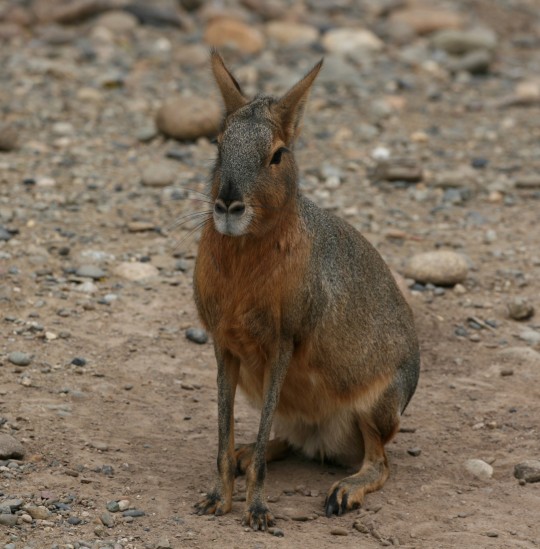
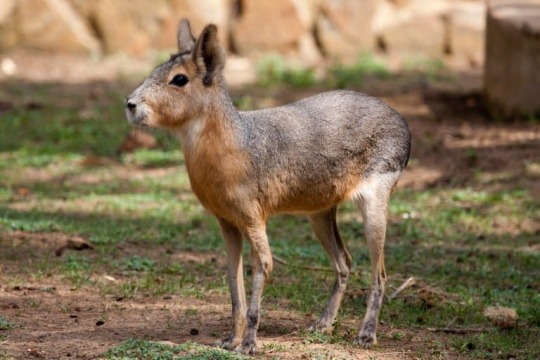
Patagonian mara!
(Dolichotis patagonum)
56 notes
·
View notes
Photo
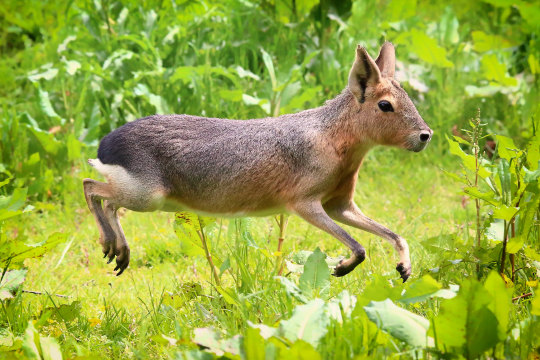
Patagonian mara (Dolichotis patagonum)
127 notes
·
View notes
Text
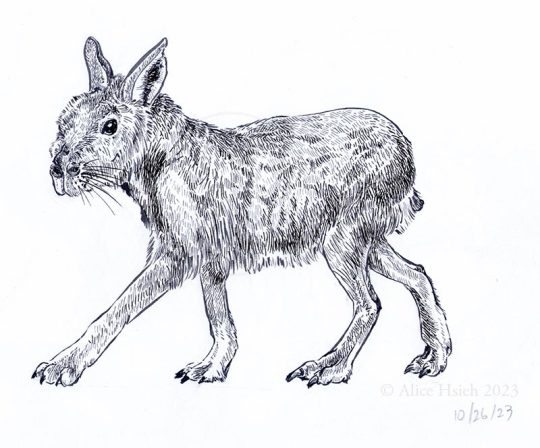
Sciartober Day 26: One of the subjects that has become a staple in my October drawings, back when I started making Halloween cards, is that there's usually a rodent somewhere. So for the prompt fast, I did the fastest rodent, the Patagonian mara, also known as the Patagonian cavy, a very rabbit-like rodent. I'm not quite sure I got the proportions right. Pentel brushpen, Windsor & Newton fine-line marker, and Prismacolor fine-line marker on Canson mixed media.
#Sciartober#Sciartober 2023#SciartoberDay26#animal#mammal#animals#rodent#Patagonian mara#Patagonian cavy#Dolichotis patagonium#fast#sciart#art#my art#October drawings#October drawings 2023#pen and ink#black and white
6 notes
·
View notes
Note

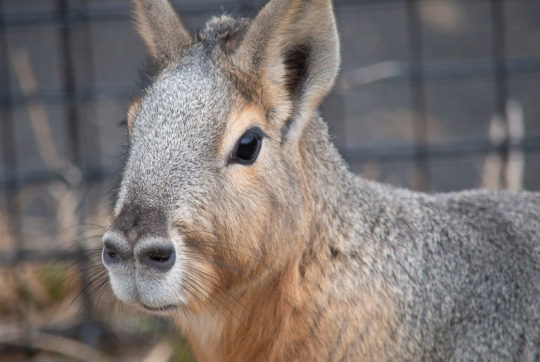

Patagonian mara
Dolichotis patagonum
Dolichotinae, Caviidae, cavimorpha, rodentia
Related to capybaras and guinea pigs
JACKSON ARE YOU INVENTING NEW ANIMALS EVERYTIME I TURN MY BACK HOW ARE YOU FINDING THESE
73 notes
·
View notes
Text

Grzimek's Animal Life Encyclopedia, vol. 11, Mammals II. 1972. Illustrated by Peter Barrett.
1.) Patagonian mara (Dolichotis patagonum)
2.) Chacoan mara (Dolichotis salinicola)
3.) Capybara (Hydrochoerus hydrochaeris)
4.) Pacarana (Dinomys branickii)
5.) Mountain paca (Cuniculus taczanowskii)
6.) Lowland paca (Cuniculus paca)
7.) Red acouchi (Myoprocta acouchy)
8.) Black agouti (Dasyprocta fuliginosa)
9.) Red-rumped agouti (Dasyprocta leporina)
#rodents#patagonian maras#chacoan maras#capybaras#pacaranas#mountain pacas#lowland pacas#red acouchi#black agoutis#red-rumped agoutis#Peter Barrett
352 notes
·
View notes
Text
Korkeasaari
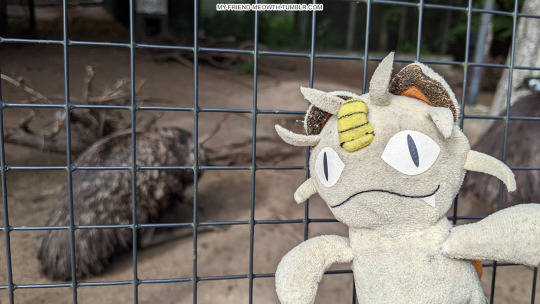


Emu (Dromaius novaehollandiae) Emu

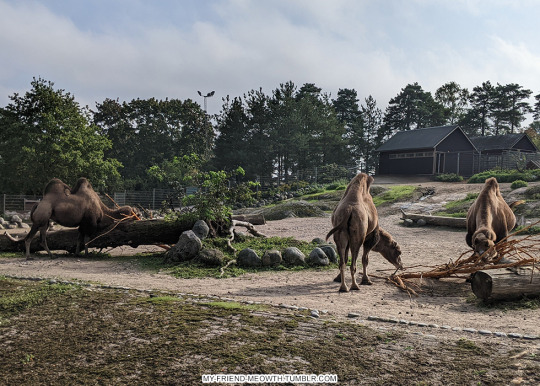
Kaksikyttyräinen kameli (Camelus bactrianus) Bactrian camel
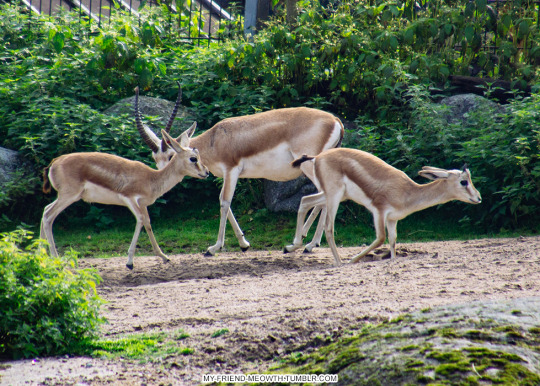
Kuhertajagaselli (Gazella s. subgutturosa) Goitered gazelle

Huulipekari (Tayassu pecari) White-lipped peccary

Pampajänis (Dolichotis patagonum) Patagonian mara
#meowth#korkeasaari#helsinki#emu#bactrian camel#goitered gazelle#white-lipped peccary#patagonian mara#pokemon#my pokemon
18 notes
·
View notes
Text
Round 1.4
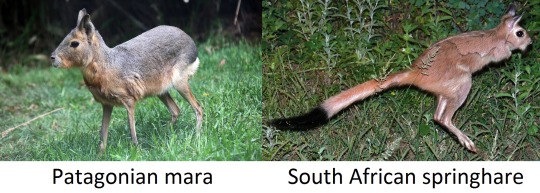
Information about contestants below!
Patagonian mara (Dolichotis patagonum)
Patagonian mara resembles a jackrabbit. It has distinctive long ears and long limbs. The feet are compressed, making them hoof-like. It’s a relatively large rodent with head and body length of 69–75 cm. Primarily diurnal. They prefer to live in habitats with shrub cover. Maras feed primarily on green vegetation and fruit. When running, they have been compared to deer and antelope.
Their social organizations have a unique combination of monogamy and communal breeding. Dens are dug during the breeding season for the young to be raised. Communal living provides protection from predators with the survival rate for young being higher in larger groups than in smaller groups.
Patagonian maras are found only in Argentina and are considered to be a near threatened species.
South African springhare (Pedetes capensis)
It’s a medium-sized terrestrial and burrowing rodent. It resembles a small kangaroo with well-developed hind legs, short front legs, and a long tail which comprises half of its body length. As well as a long tail, springhares have relatively large eyes and ears. Similar to kangaroos, they also use their tails for balance. Springhares are reported to be able to make hops of 20 cm and leaps of 2 m.
The colour of springhare varies from a reddish-brown on its upperparts to an off-white belly and a black tip on the tail. Their fur is biofluorescent.
Springhares are nocturnal animals, who forage during the night and retreat to a burrow during the day. Herbivorous, however, they are picky eaters and often leave abundant plant materials behind in their feeding grounds.
13 notes
·
View notes
Text
Animal of the Day!
Patagonian Mara (Dolichotis patagonum)

(Photo from Smithsonian National Zoo)
Conservation Status- Near Threatened
Habitat- Argentina
Size (Weight/Length)- 8 kg; 75 cm
Diet- Grasses; Seeds; Cactus; Fruits
Cool Facts- The Patagonian mara is a distant cousin of the capybara. Looking to be a giant rabbit, these rodents are the size of a small dog. When a Patagonian mara is awake, they spend almost 50% of their time eating. Patagonian mara mate for life and live in small groups of mated pairs and their offspring. Communal dens are dug for the females of the group. When the baby mara are born, pairs of adults will take turns caring for all the babies. Patagonian mara are relatively vocal and constantly communicate while feeding.
Rating- 12/10 (A weird, adorable critter.)
#Animal of the day#Animals#Mammals#Rodent#Saturday#May 7#Patagonian Mara#biology#science#conservation#the more you know
116 notes
·
View notes
Photo

Patagonian Mara(Dolichotis patagonum).
The 3rd largest rodent in the world!
Native to central and southern Argentina.
Their closest living relatives are guinea pigs and the capybara.
A4, ink, watercolour, coloured pencils, 2022
#patagonian mara#rodent#ink and watercolor#ink drawing#ink#gore#macabre#lowbrowillustration#red roses#swords#wildlife#Dark Aesthetic#darkcore#tattoo design#tattoo ideas#pen and ink#wild animals#argentina#fantasy art#arte
12 notes
·
View notes
Text

Wieder einmal feiern wir das höchste Fest des Christentums, das Osterfest. Leider ist dies für viele Menschen der Anlass, zahlreiche Tierprodukte zu kaufen, von Milchschokolade über "Ostereier" bis hin zum "Osterlamm". Dass dies alles enormes Tierleid verursacht, wird dabei ausgeblendet! 😰
Wir möchten deshalb insbesondere heute darauf hinweisen, dass Kuhmilch ausschließlich für Kälber und nicht für Menschen gedacht ist - und das gilt auch für Käse, Sahne, Milchschokolade usw.! Für uns gibt es hingegen Hafermilch, Sojajoghurt und veganen Käse! 😎🌱
Warum also konsumieren so viele Menschen noch immer Kuhmilchprodukte?
Würden sie genau gerne Hasenmilchprodukte kaufen?
Oder doch lieber auf Giraffenmilch zurückgreifen?
Wir wissen es nicht... 😉
Und was ist mit Hühnereiern?
Wer bitte denkt ernsthaft, dass der menschliche Körper von der Natur dafür vorgesehen wurde, Vogeleier zu essen?!
Auch wenn wir nahezu alles essen können, wenn es nur ausreichend gegart wurde, heißt das doch nicht, dass dies auch sinnvoll ist, oder?
Wir bitten Euch deshalb, vergesst an Ostern die anderen Tiere nicht und boykottiert sämtliche Tierprodukte - für die Tiere, den Planeten und Eure eigene Gesundheit! 💚
In diesem Sinne wünschen wir Euch allen ein frohes veganes Osterfest! 😊🌱
Anmerkung:
Auf dem Bild seht Ihr einen großen Pampashasen, auch bekannt als Große Mara (Dolichotis patagonum). Er ist eine in Argentinien lebende Nagetierart aus der Familie der Meerschweinchen (Caviidae).
Quellen:
➡ LINK 1
➡ LINK 2
➡ LINK 3
➡ LINK 4
➡ LINK 5
0 notes
Text
Al Parco Zoo di Falconara sono nati due cuccioli di marà della Patagonia
Al Parco Zoo di Falconara sono nati due cuccioli di marà della Patagonia
Al Parco Zoo di Falconara sono nati due cuccioli di marà della Patagonia
Mese di maggio ricco di appuntamenti. Quattro domeniche a tema per imparare a rispettare la natura
FALCONARA MARITTIMA – Si allarga la famiglia del Parco Zoo Falconara, che saluta la nascita di due cuccioli di marà della Patagonia (Dolichotis patagonum), simpatico mammifero tra i roditori più grandi al mondo. Ribattezzata…

View On WordPress
0 notes
Photo

Patagonian mara (Dolichotis patagonum)
Photo by charliejb
#captive animal#patagonian mara#mara#dolichotis patagonum#dolichotis#dolichotinae#caviidae#caviomorpha#hystricognathi#hystricognathiformes#hystricomorpha#rodentia#glires#euarchontoglires#boreoeutheria#eutheria#mammalia#tetrapoda#vertebrata#chordata
86 notes
·
View notes
Photo

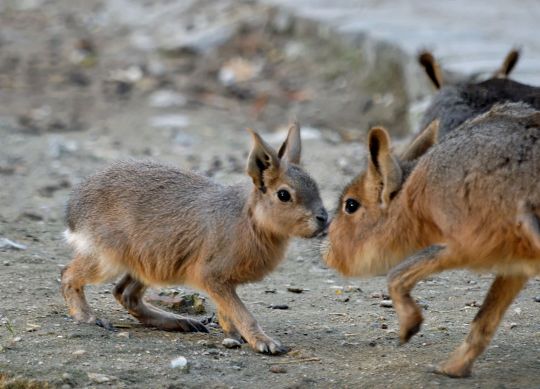

Patagonian mara (Dolichotis patagonum)
The Patagonian mara is a relatively large rodent in the mara genus Dolichotis. This herbivorous, somewhat rabbit-like animal is found in open and semiopen habitats in Argentina, including large parts of Patagonia. It is monogamous, but often breeds in warrens shared by several pairs. The average Patagonian mara has a head and body length of 69–75 cm with a tail of 4–5 cm.They prefer to live in habitats with shrub cover, but they also inhabit overgrazed and barren soils in the Monte Desert biome. They have adapted well to a cursorial lifestyle on the open plains and steppe, with long legs, reduced clavicle, and well-developed sensory organs making them capable of running and communicating in these open habitats. When running, maras have been compared to deer and antelope. Maras are largely herbivorous. They feed primarily on green vegetation and fruit. Maras are primarily diurnal and around 46% of their daily activities involve feeding. Patagonian maras are considered to be a near threatened species.
photo credits: Luis Argerich, Jastrow, Postdlf
#Patagonian mara#Dolichotis patagonum#mara#zoology#biology#biodiversity#science#wildlife#nature#animals#cool critters
473 notes
·
View notes